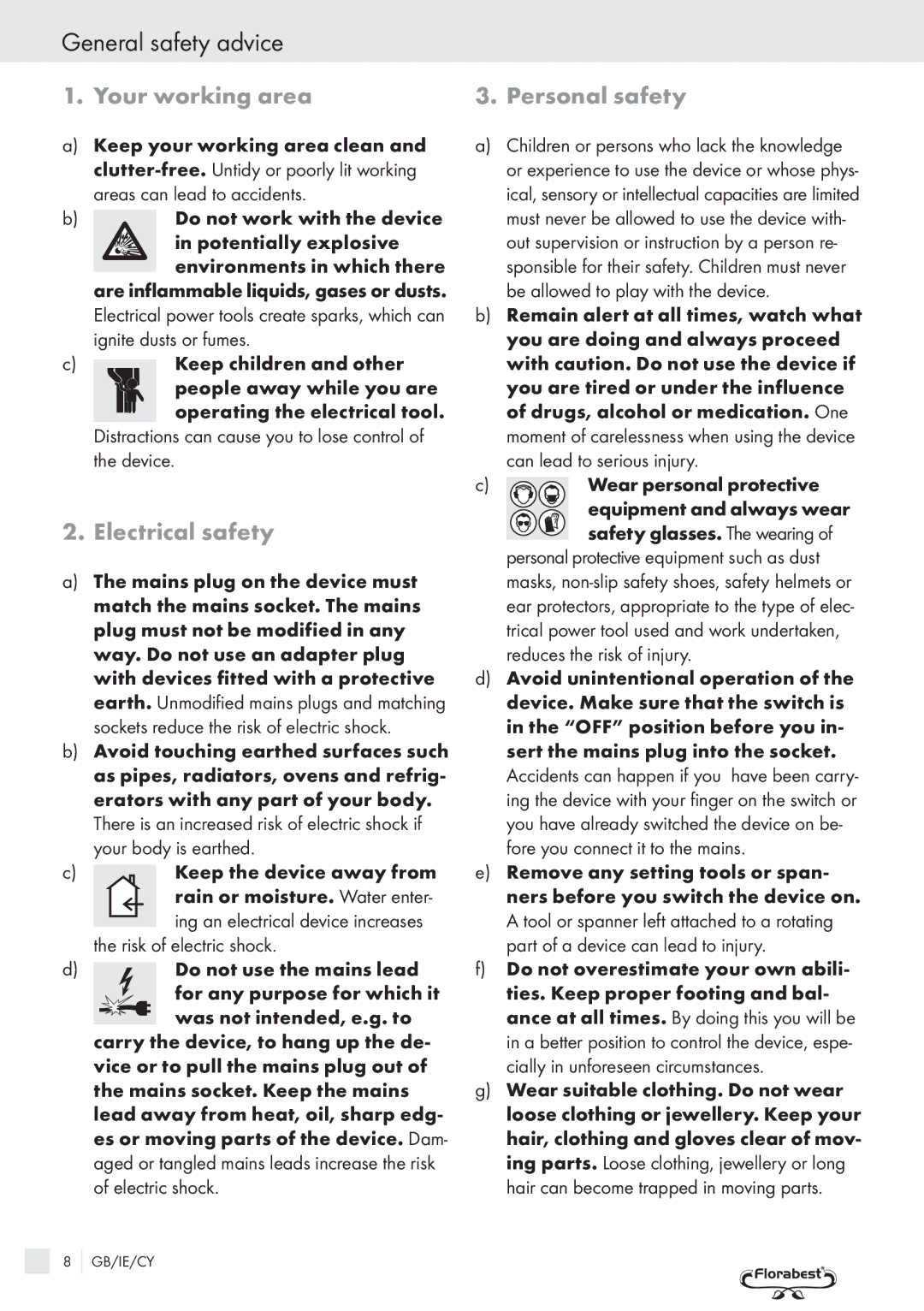FSM R1 specifications
The Kompernass FSM R1 is a versatile and user-friendly electric food steamer designed for health-conscious cooking enthusiasts. It offers a convenient solution for preparing a variety of meals while preserving the nutrients and flavors of the ingredients. The FSM R1 stands out with its modern design and functional features tailored for efficiency in kitchen tasks.One of the main features of the FSM R1 is its multi-tier steaming capability. The device typically comes equipped with multiple steam baskets that allow users to cook different types of food simultaneously. This is particularly advantageous for families or individuals who want to prepare balanced meals in one go. The baskets are often made of high-quality, BPA-free materials that ensure safe cooking while also being durable enough for regular use.
Another notable characteristic of the FSM R1 is its powerful heating element. This technology ensures quick steam production, reducing cooking time while effectively maintaining the nutrient properties of vegetables, fish, and other foods. The ability to control the steaming duration is also a plus, allowing for precise cooking tailored to personal preferences and specific recipes.
User-friendliness is a key aspect of the Kompernass FSM R1. It features intuitive controls, often with straightforward settings for various food types, making it accessible for both novice and expert cooks. The clear water level indicator helps monitor the water supply, ensuring uninterrupted cooking sessions. Additionally, many models include an automatic shut-off feature for safety, preventing overheating or boil-dry situations.
The FSM R1 is also appreciated for its compact size, which makes it suitable for kitchens of all sizes. Its lightweight design allows for easy handling and storage, making it a practical addition to any culinary space. Cleaning is made simple with detachable parts that are often dishwasher safe, saving time and effort post-cooking.
In summary, the Kompernass FSM R1 is a reliable electric steamer that embodies a commitment to healthy cooking. Its multi-tier design, powerful heating technology, user-friendly controls, and compact structure make it a valuable tool for anyone looking to prepare delicious and nutritious meals with ease. Whether steaming vegetables, fish, or even desserts, the FSM R1 ensures that cooking remains a hassle-free and enjoyable experience.

